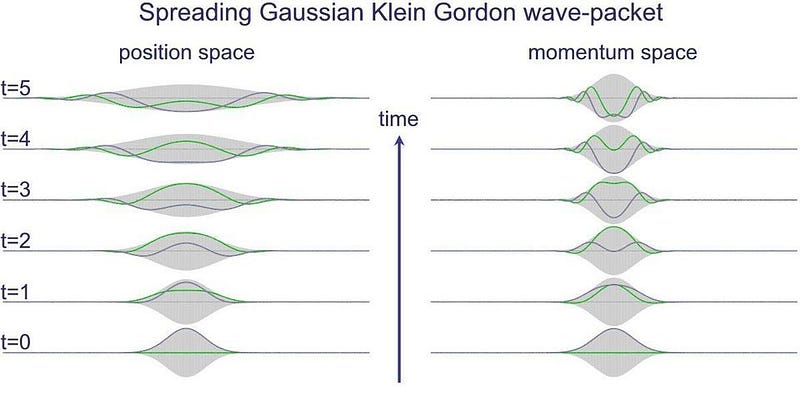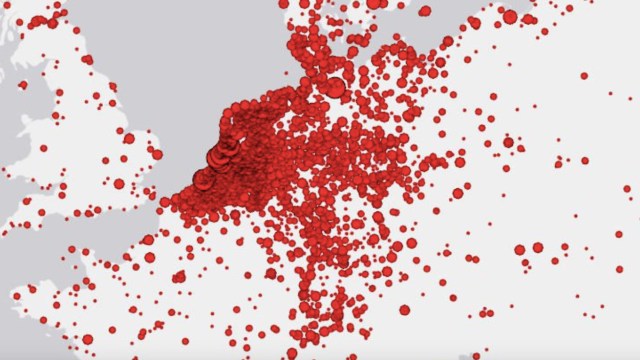One Universe Is Not Enough

We don’t need the many-worlds of quantum mechanics to have more Universes than we know what to do with.
“The Universe is all there is, or was, or will be.” That seems like a reasonable statement to make, doesn’t it? It certainly matches with our conception of the word Universe, which implies that this is all of space and all the matter and energy within it. We certainly live within the Universe, and can see an enormous amount of it: some 46 billion light years in all directions. After 13.8 billion years since the hot Big Bang, and the fabric of space expanding for all that time, this is the absolute limit of how far away we can see.
But what lies beyond that? Is there more Universe like our own? The answer is yes, there ought to be. But there ought to be something even more than that: a larger spacetime structure that has an enormous, countlessly large number of Universes embedded within it. If our best theories are correct, our one Universe is not enough. Here’s why.

Imagine you went all the way back to the start of the Universe as-we-know-it: the beginning of the hot Big Bang. What would it look like? You’d find yourself immersed in a hot bath of particles, antiparticles, and radiation. They would all be massless, and therefore moving around at the speed of light, since the Higgs hasn’t yet given mass to the Universe. And the temperature and energy of these particles would be exquisitely high: around 1028 K, give or take a little bit. Everything that was energetically allowed would exist, and particle collisions — including spontaneous creation and annihilation of particle/antiparticle pairs — would happen rapidly, frequently, and relentlessly.

From this point on, we normally run the clock forward in time, watching the Universe expand, cool, create more matter than antimatter, and eventually form nuclei, atoms, gravitational clumps, stars, galaxies, and after enough time, human beings.
But what if we went the other way? What if we went backwards, instead, and asked where the conditions we call the hot Big Bang originated from? We’d arrive at a strange, almost alien-like state of affairs: a period of cosmic inflation. Instead of the energy in the Universe being bound up in particles, antiparticles, and radiation, it would instead be energy inherent to the fabric of space itself. The consequences of cosmic inflation are profound, but not always intuitive.

If the Universe has all of its energy wrapped up in a form that’s inherent to space itself, it still expands, but it doesn’t cool or become less dense like the post-Big Bang Universe does. Instead, it expands exponentially, which means that it doubles in size after a small-but-fixed amount of time goes by: somewhere around 10^-35 seconds. Therefore, by time 10^-34 seconds have gone by, the Universe has increased in size by a factor of 2¹⁰, or 1024. By time 10^-33 seconds go by, it’s increased by 2¹⁰⁰, or ~10³⁰. And so on.
The key realization of inflation is that the energy density remains constant. As the volume of the Universe increases, the energy inherent to space in every region remains the same. As the Universe inflates, it simply creates more and more Universe that’s still inflating.

“So what,” you say, “it’s still all just the one Universe, right?”
Maybe it is. The volume of the Universe increases tremendously, relentlessly, and without bound, but not indefinitely. It only does this until inflation comes to an end. And when it does end, all of that energy inherent to space gets converted into particles, antiparticles, and radiation: the end of inflation coincides with the start of the hot Big Bang.

Those are the basics of what inflation does. If we look at how this physically works, we can visualize inflation as a field: a ball that sits at the top of a hill. The hill has to be particularly flat on top, so that the ball can spend a lot of time up there. The ball rolls, inevitably, down towards the valley below, but it has to roll slowly: only when the ball sits atop the flat part of the hill can inflation occur. When the ball rolls down into the valley, inflation comes to an end, giving rise to a Universe filled with particles, antiparticles, and radiation: it starts the hot Big Bang.

Again, so far, so good. We have one Universe, it inflates, inflation ends, we get the hot Big Bang, and everyone’s happy.
Until you remember one important caveat that we’ve ignored thus far: everything that physically exists, including all particles and fields, must be inherently quantum in nature. Quantum particles are strange, counterintuitive entities that don’t always act like particles, but also have wave-like properties. And one of the most important things that quantum particles do, whenever you put one of them anywhere in the Universe, is that their positions are no longer fixed, but rather are described by a probability distribution. And the longer you wait, the more the wavefunction that describes where a particle is spreads out.

This isn’t a big deal for a free electron in our Universe today, but it’s an awfully big deal for inflation! Imagine you’re up atop this hill, and you’re rolling slowly towards the valley. At the same time, your position has a probability of spreading out, and while there’s a finite chance that you’ll wind up closer to the valley than you would have otherwise, there’s also a chance that you’ll wind up further up the hill than you started.
Now, here’s the kicker: because your space is expanding and inflating, different regions of space can have different things happen. Let’s imagine we let enough time pass that five different regions, each now the same size as the original region, now exist. What happens if we allow them to randomly spread out?

In a few of them, inflation ends. In others, inflation continues, but looks like it’s close to ending. And in others, it continues on, even more robustly than it would have without the spreading and the rolling at all.
When you work out the probabilities, for practically all viable models of inflation, you find that the amount of space where inflation occurs and doesn’t end always increases over time. There will inevitably be regions where inflation does end, and where it does, you get a hot Big Bang. But outside of each of those regions, there will be a place where inflation didn’t end, and space continues inflating there. With each new instant that time brings, there’s a finite chance that inflation will end, but an even better chance that it will continue on, farther into the future.

What we wind up with, therefore, is a spacetime where, at any time, inflation ends in a few regions, and we get a hot Big Bang where it does. Each of those regions will be surrounded by a broader spacetime that continues to inflate, where in each of the inflating regions, a few small patches will see inflation end and a hot Big Bang ensue. These various hot Big Bangs will each give rise to their own observable Universe, just like ours, with a different starting point and different specific initial conditions for each region. They will be separated by more inflating space, and no two Universes will ever collide or interact with one another.
This is where the concepts of eternal inflation, the multiverse, and the existence of many disconnected Universes come from.

If you accept that inflation is a stage that occurred in the Universe’s past prior to the hot Big Bang, and that the Universe itself is inherently quantum in nature, the existence of a multiverse is unavoidable. Even though we cannot observe these other Universes, we can observe a huge amount of evidence for inflation, indirectly pointing to its inevitability. We can also observe a huge amount of evidence that the Universe itself is quantum, even though we have no proof that inflation itself behaves as a quantum field. If you put these pieces together, it unambiguously leads to the prediction that our Universe should be only one of countlessly many Universes, all embedded in an eternally inflating, expanding background.
One Universe is not enough. Even though we cannot detect it, the prediction of a multiverse is unavoidable.
Ethan Siegel is the author of Beyond the Galaxy and Treknology. You can pre-order his third book, currently in development: the Encyclopaedia Cosmologica.





